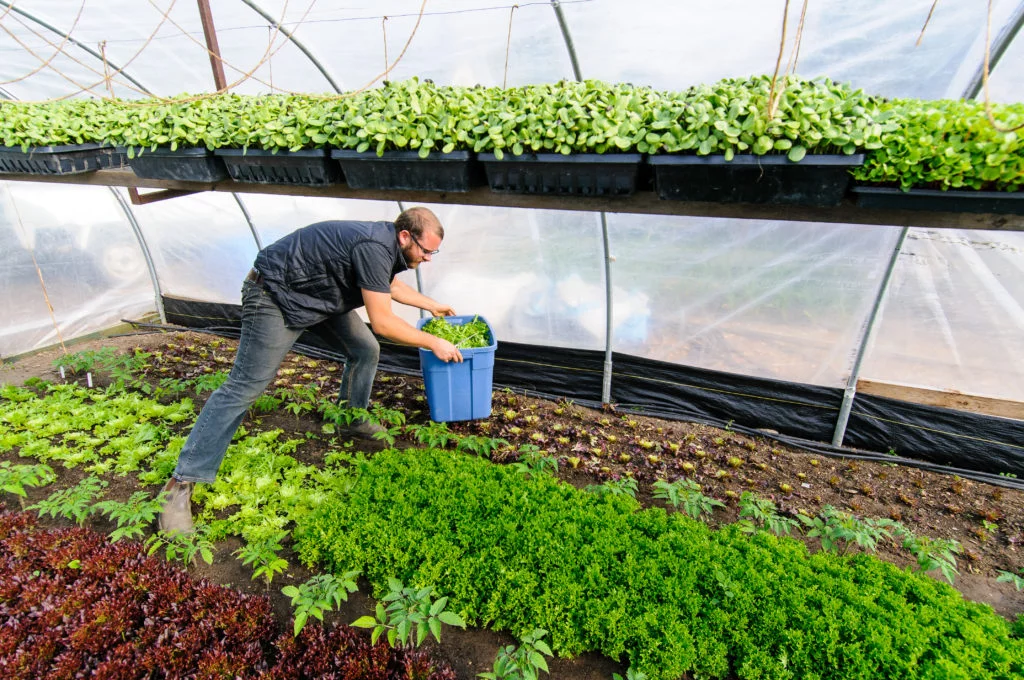Is Backyard Farming Profitable? – Backyard farming involves cultivating crops such as root/tuber crops, poultry, vegetables, small ruminants and cereals using the small pieces of land in the residential areas in such quantities that will meet the needs of the immediate household.
Backyard farming is all about maximizing your space to your benefit by growing what you think is suitable for yourself or your family and enjoying being outside and contributing to a greener and healthier pasture.
You can be a backyard farmer and only grow one type of plant or be a backyard farmer and have animals, making your home a homestead. There isn’t a wrong way to be a backyard farmer.
Growing some of the food that your family consumes is an excellent way to save money and eat essentially on a budget. As food prices continue to go up, more families turn to backyard farming as a way to access high-quality food without breaking the bank.
So, whether you live on a small plot in the city or a piece of land outside town, there’s a lot to benefit from by having your backyard farm.
People may ask, is backyard farming profitable? I can boldly tell you that backyard farming is more than profitable because you can generate significant profits without investing a lot of money.
But the fact about profitable backyard farming is to have several clients to ensure that you can always sell your products.
However, home gardeners around the country are proving that they can grow an incredible amount of healthy and delicious vegetable crops in their backyards. Thus, only hitting the produce section of the grocery store to supplement their fresh food.
Benefits Of Backyard Farming
Growing backyard produce has its advantages over commercial growers. The best reason to grow your vegetables is that you can control what goes onto – and into – your food; plus, produce doesn’t get any fresher than travelling 24 feet from the garden to the kitchen.
While it may seem like commercial farmers have all the right stuff (including lots of lands), there are some distinct advantages to growing produce in your backyard versus a full-blown farm with vast acreage.
- The first benefit is that a backyard vegetable garden is an endeavor that’s manageable by nearly everyone. And it doesn’t take a crew of workers to plant, maintain, or bring in a crop in a typical backyard situation.
- Gardening tools are inexpensive and minimal (by far) compared to traditional farming. There’s not only less of it to purchase, but the price can range down to nearly nonexistent if you receive some as gifts. You can grow your fair share of crops on your decks, balconies and window boxes. There is even an upside-down tomato plant grower, so small spaces can take advantage of every square inch, even upside down hanging from the eaves.
- Another incredibly cool thing about small land farming is that depending on where and how you intend to garden, if a crop isn’t working in one area, it is possible to move that crop to a different location – all in the same season. This is a simple situation if you’re container gardening. If your carrots are in big plastic pots and you find they are not getting a good enough sun-soaking, drag the planted container to another location.
- Again, it’s less inclined to be attacked by garden pests in great numbers. Home gardeners grow distinctly smaller quantities of vegetables so that pests have a more challenging time discovering home crops. It’s also easy to tuck companion plants into garden beds to attract beneficial insects and repel undesirable ones. If pests do insist on hanging around, they’re easier to remove in a backyard garden.
- If you are using raised beds, depending on your growing zone, it’s possible to squeeze another harvest out in the same season. Raised beds stay warmer than beds dug into the ground. This isn’t something large farm operations can often enjoy.
- Raised beds are not only more reasonable to construct in a backyard but can also be created in any fashion your little heart desires. They can be built on a long stretch of the side yard or several shorter rows outback. They can be L – shaped or a kidney-shaped island in the middle of the lawn. You can have container boxes on your back porch by the kitchen door, which perfect for a herb garden.
- Your produce can be essential when hosting a party because you don’t have to worry about food. You can put up things from your garden to entertain your quest.
- Also, they are lots of benefit for raising chickens. Among those benefits are your poultry, eggs, and meat in high demand for supply to industries and other businesses that will require eggs or meat. Most importantly, Poultry dropping serves as a great source of fertilizer.
- You can be making an insane amount of money every year from crops like corn, soybean, wheat and peanuts supplying to local grocery stores in your community.
Backyard Farming For Profit
Many families also have profitable backyard farms that supplement or replace a family income! You may not realize how profitable a small backyard could be until you contact an Urban Farmer who grows food for Profit for farmers markets, restaurants and even for his consumption.
You can be fascinated with the concept, and after researching, you found that you can make $30-50K in supplemental income on as little as 1/10 of an acre.
Get Started With Backyard Farming
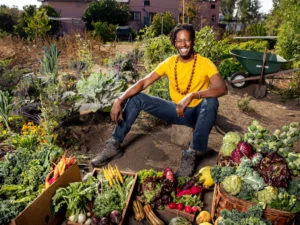
Have you sometimes thought it would be great to be a farmer, but you don’t want to live out in the country? Maybe you would like to earn some money without leaving home or making a considerable investment to start a business? Then you are perfect for Backyard Farming.
And this doesn’t mean that you have to house chickens or other livestock. Most people who have a backyard farm focus solely on growing vegetables.
Whether they live in the country, suburbs, or an urban area, many people are learning to make maximum use of the space they have to grow food for their families and make a profit.
Top 10 List of Profitable Backyard Farming in The U.S.
Generally, growing specialty crops is the perfect way to turn your backyard skills and knowledge into extra income. Unlike commonly grown crops like grain and vegetables, specialty crops are not widely grown and bring higher prices for growers. It’s not unusual to find growers earning as much as $60,000 per acre with these unique cash crops.
All of the specialty crops listed below are easy to grow and produce above-average income from a small plot of land. Best of all, most of them can be grown without working full-time.
If you can spare just a few hours a week and a few hundred dollars for seeds or seedlings and supplies, you can grow any one of these profitable plants. They are; Gourmet mushrooms, Garlic, Herbs, Landscaping trees and shrubs, Willows, Bamboo and Bonsai plants.
These are my favorite specialty crops because they all can produce a sizable income every year, are in demand, and can be grown by anyone with a bit of common sense and basic gardening skills. Any one of these profitable plants could bring both personal and financial rewards to new growers.
Also, depending on what you are growing, you may plant two crops side-by-side, saving you space. On your farm, you may plant coconut trees that are spaced five meters apart between these plant crops, such as beans, zucchini, and cucumbers.
Because you have irrigation already in place to water the coconuts, which have deeper roots, you can use the space to a more significant, more profitable effect.
The income generated from the earlier crop will pay for the cost of electricity to water the coconuts. There are many combinations of good crops to grow together, helping you generate higher yields using the same amount of space and water.
1. Raising Chickens
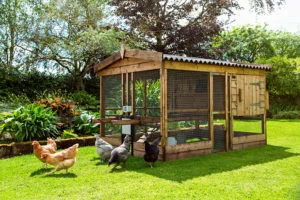
Your Backyard Farming Experience Begins Here. Whether for eggs, meat, fun, or Profit, chickens are the perfect addition to any new backyard grower’s farm. Raising Chickens is your guide to successfully caring for your flock.
More so, raising Chickens is your first big step to joining the growing movement of homemakers and homesteaders looking to make a return to a healthier, happier way of life—and it starts right in your backyard.
As a comprehensive primer for first-time chicken farmers, Raising Chickens includes detailed illustrations and informative photographs that help to ease new homesteaders into the world of backyard chicken farming.
Find Out – Do Backyard Chickens Attract Flies?
Raising Chickens takes you from start to finish: from planning out your chickens’ space to hatching and raising new chicks, to keeping your birds happy, healthy, and well-fed, to enjoying your very own farm-fresh eggs and more.
With Raising Chickens, you will:
- Find the ideal breed of bird for your needs
- Construct a coop to minimize your workload and maximize your enjoyment
- Gather eggs for food, Profit, or to hatch your birds to add to your flock
- Use the freshest eggs possible in a variety of delicious recipes
…and many more tips and tricks from experienced farmers to help you avoid the most common mistakes.
Backyard Farming is a series of easy-to-use guides to help urban, suburban, and rural dwellers turn their homes into homesteads. Whether planning to grow food for the family or sell at the local farmers market, Backyard Farming provides simple instructions and essential information in a convenient reference.
However, backyard chicken keeping is an easy and popular way to get into urban farming without spending much money or the need for a lot of space for gardening.
Chickens require relatively little space for the number of eggs and meat they produce and are easy to care for. Therefore, you can initially start by investing in a modest chicken house in your background and gradually grow in capacity.
2. Backyard Farm Snails For Profit

It is easy to think of snails only as pests, but they can earn you significant money. Snail farming has been around for many years. In some developing nations, it is becoming an important export crop.
To farm snails, you’ll need to provide them with shelter, plants, and food, which can vary depending on your situation. Some backyard farmers use outdoor pens which are open; others use netting to keep them in. I have also seen them grown commercially in polytunnels.
Before investing in structures to house them, start small and develop a market for them. Then, if you see the demand growing, expand by increasing the available housing for them.
3. Backyard Fruit Trees

Fruit trees can be grown in your backyard in a variety of ways. Fruit trees can be grown in huge pots if the entire space is paved. Because of their high demand, loquats, oranges, and lemons are suitable for urban growing.
Rather than planting giant trees that will exceed the containers and available area, you can go for shrubs that will blend nicely with your garden.
Because of their small size, hazelnuts are suitable for small settings. So, fruits like berries, melons, citrus, and many more can generate a considerable amount of money.
4. Backyard Corn For Profit

Generally, corn is the most abundantly produced cereal globally as it is grown in every continent except Antarctica. More so, corns are the most greatly produced feed grain in the United States.
However, over 90 million acres of corn are vigorously grown for industrial products such as cornstarch and corn syrup, feed, food and beverage products like sweeteners, ethanol, and cereal. So, it would be so profitable to grow corn in your backyard.
5. Rice For Profit

It will be very significant to have your backyard farm taken to a unique side by growing various unique and global crops like rice other than familiar crops like cucumber, watermelon, tomatoes, and beans. However, it is possible to grow rice at home and make money with it.
Rice is typically divided into two categories, which are lowland and upland rice. Upland rice, as it implies, is a type of rice that grows in higher terrain and adapts to drier conditions.
So, it is advisable to grow an upland variety of rice called Duborskian. This is because they grow well in regular garden soil and can be easier to maintain without pests and diseases.
6. Vegetables

How about growing the best vegetables and fruit, which can also be to make profits? There’s absolutely nothing quite like fresh veggies, especially if you grow them yourself, which you can! It may seem daunting at first, but gardening is a gratifying hobby.
So, it could be best to grow vegetables like carrots, spinach, watermelon, green pea, cucumber, lettuce, tomatoes, pumpkin, cabbage, etc.
Though maintaining a backyard garden might seem like a lot of effort at times, it’s often not as arduous as it appears; it can be fun as well.
Ensure you always plant the right seeds at the right time, and some easy garden vegetables will practically grow themselves without much care and investment.
Plus, the satisfaction you get from picking your veggies freshly in your backyard effortlessly without worries of pesticides that are used to grow crops like peas, lettuce, tomatoes (cherry or bush variety), green beans, carrots, chard or spinach, zucchini, radishes and beets in a large scale.
7. Tree Nuts

A great, low-maintenance, and decorative way to grow food in an urban or suburban environment is by planting nut trees.
Nuts have a high nutritional value, and they are popular in many recipes. Nuts require little maintenance or upkeep as compared to most garden vegetables.
The following are popular varieties of edible nuts grown by residents in North America. These are relatively easy to grow in most front or backyards.
Be aware that nearly all nut trees bear fruit only every other year. So, walnuts, almonds, hazelnuts, chestnut, pine nut, macadamia, pistachios, and pecans can be grown in your backyard.
8. Soybean And Oil Crops
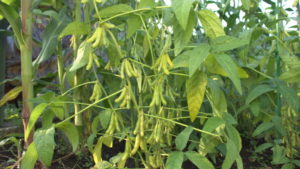
As soybean seeds lose moisture, they change from large kidney bean-shaped to smaller and nearly round. When dry, the seed contains about 40% protein, 21% oil, 34% carbohydrates and 5% ash. There is an astounding number of soybean varieties.
The great majority of soybean varieties grown commercially today is for animal feed and oil production (for food processing and industrial uses).
Most are yellow-seeded field varieties. Other varieties can be obtained for special uses: forage and hay (with abundant stems and leaves; small-seeded black and late brown varieties) and human food (large-seeded, various-colored varieties). So, growing them could be profitable.
9. Pulses

Pulses are beans, peas, legumes, peanuts, and lentils that are harvest when dry. As the green beans, many backyard framers are already familiar with pulses are easy to grow.
As a bonus, they are as nutritious for the soil as they are for the body. So, try this variety in your backyard and see how well your farm grows.
Note, rabbits love pulses. Make sure your tender, emerging pulses have protection from neighborhood rabbits with suitable fencing.
10. Wheat
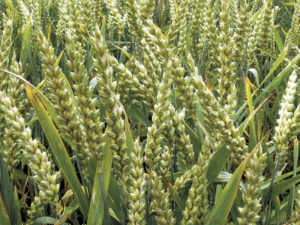
There are two types of wheat, Spring Wheat sown in spring and harvested the same season, or Winter Wheat, which is planted in the fall, allowed to go dormant over winter, then harvested the following year.
Hard, red spring wheat is best sown as early in spring that the ground can be worked to harvest in August to September.
Winter wheat can be planted right around the first frost. After a brief growth spurt, it will go dormant for the winter, pop up in spring, and rapidly grow to full harvest in just two months.
To grow your own wheat, choose a sunny site with well-drained soil; avoid heavy clay or damp marshy areas. Sow wheat seeds about an inch to an inch and a half deep in well-tilled soil.
Toss or “broadcast” the seed across the garden plot and rake the seeds in. Water gently so you do not wash the seeds away. Wheat is somewhat drought tolerant.
Open Your Backyard Farm To The Public
There are many successful backyard farms that are open to the public, providing a safe environment for adults and children to see animals and crops up close.
Each person is charged upon entry, and some families make a day out of it. Some farmers even make more money through tourism than from farming itself.
Although visitors will come on the weekends and during school vacations, many schools love taking children on field trips to local farms.
Canning And Preserving Backyard Product
Make the most of your harvest with over 75 delicious canning recipes. At the end of a successful harvest, the backyard farmer will find themselves with an abundance of produce.
Learning to preserve your harvest for use year-round is an essential craft. With the wide variety of uses for preserved produce, the homesteader will find Backyard Farming: Canning & Preserving the right guide to ensure your experience with home preserving is a success.
Canning and preserving take you through every step of the most popular forms of canning, covering everything from hot water bath canning to the use of a pressure cooker as you explore the full range of options for your preserved foods. From jams, jellies, and preserves, to pickling food and preparing savoury sauces, find the perfect use for your preserved harvest.
With Canning & Preserving, you will:
- Explore tried-and-true food preservation methods
- Learn to properly use the equipment needed to make the most of your harvest
- Create flavorful syrups and juices for use in a variety of healthy recipes
- Enjoy delicious recipes year-round, using preserved foods
Join the growing movement of homemakers and homesteaders looking to make a return to a healthier, happier way of life—direct to your kitchen from your backyard.
Backyard Farming is a series of easy-to-use guides to help urban, suburban, and rural dwellers turn their homes into homesteads.
Whether planning to grow food for the family or sell at the local farmers market, Backyard Farming provides simple instructions and essential information in a convenient reference.
One Thing Clear About Backyard Farmers
Is Backyard Farming Profitable? This is no longer a question to be asking because every backyard farm is unique and every backyard farmer drives joy from his backyard farming either for business or fun.
Some people who grow their food are experienced homesteaders and full-time agriculturalists; others do it to cut out a few expenses and trips to the grocery store each month.
All backyard farmers share a few common traits—a willingness to learn from their mistakes, a love of the Earth, and an unrelenting desire to continue growing their farms, their crops, and having fun doing so.
Everyone we spoke to for this story planned to plant and cultivate more in the coming months. And nearly everyone mentioned that backyard farming offered rewards beyond financial freedom.
It’s also worth noting that many people with backyard farms are entrepreneurs, startup founders, and do-it-yourselfers.
If you value independence and want to live a life outside of the bounds of convention, backyard farming might be the perfect fit for you. However, Backyard Farming is very profitable.
You may also like:
- How to Plan a Perfect Backyard Wedding
- Can You Roast Marshmallows On a Gas Fire Pit
- Backyard Baby Shower Decoration Ideas
Hope this article Is Backyard Farming Profitable? satisfied your curiosity, kindly use your social media account like Facebook, Twitter, Linkedin, Quora or Reddit to share this information with those that might need it. Let’s know your thought in the comment section below!
Cheer!
www.backyardcaring.com
Is Backyard Farming Profitable

